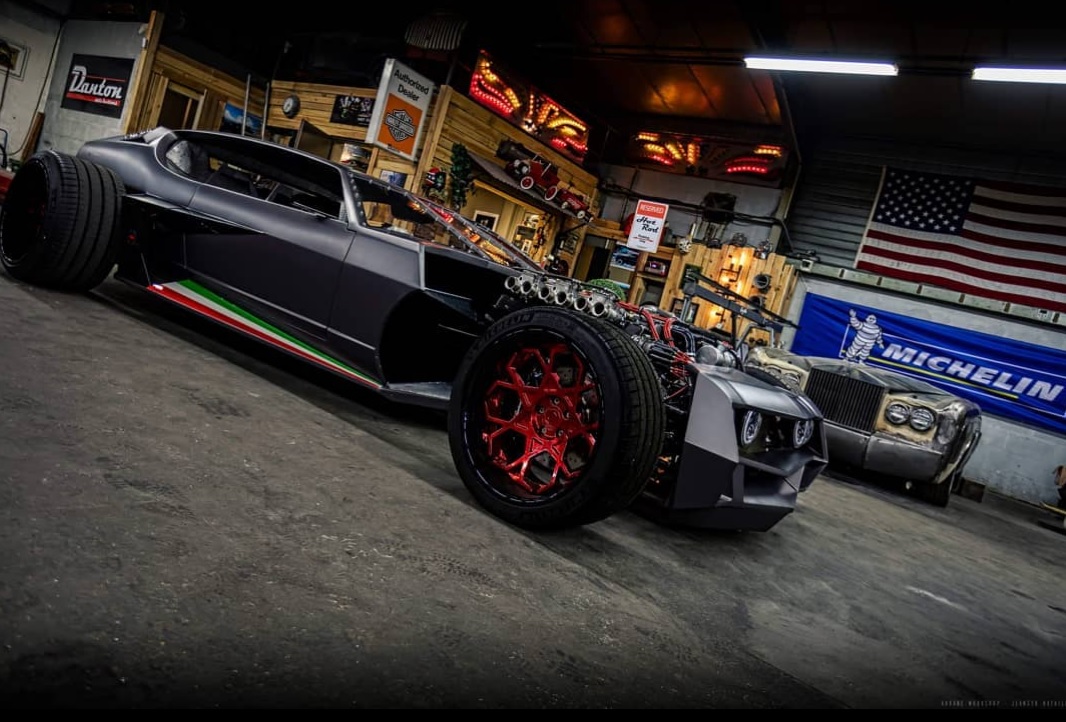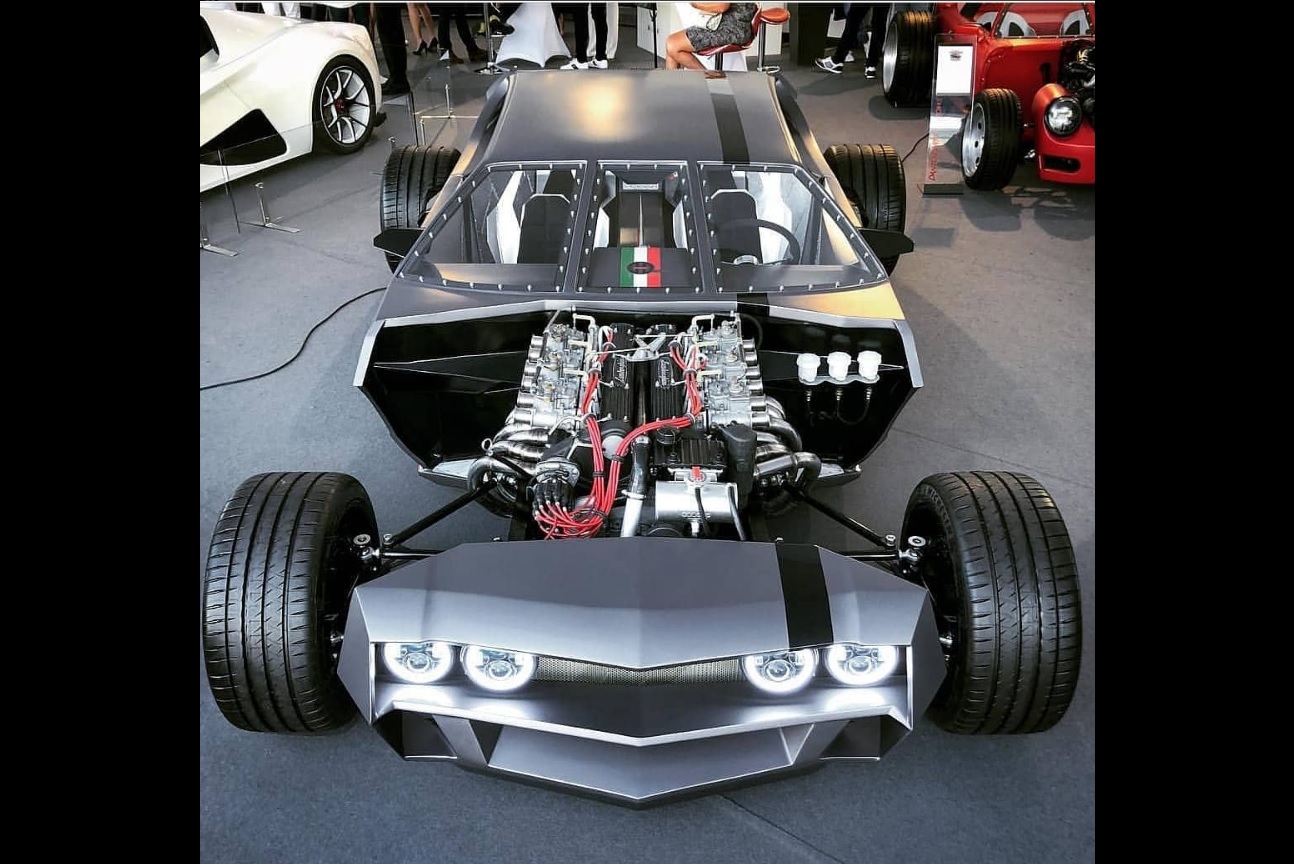Classic Lamborghini sports cars and hot-rods exist on two opposite ends of the automotive spectrum. These separate worlds unexpectedly collided in the shop of a talented French hot-rod builder named Danton Arts Kustom.
The build started life as a Lamborghini Espada, a four-seater, V12-powered coupe made between 1968 and 1978. Fully restored, the Espada is worth between $100,000 and $200,000 depending on the year it was made and its configuration. The owner of this 1970 example had a totally different idea in mind, however. He wanted to celebrate the Espada’s 50th birthday by commissioning a one-of-a-kind car that would turn heads everywhere. Mission accomplished.
The name Espada refers to a matador’s sword, according to Motor Authority, and it’s this definition that provided Danton Arts Kustom with the inspiration needed to turn a high-performance grand tourer into a vehicle that might as well have sprung to life out of the Hot Wheels catalog. The firm fitted the hot-rod with a custom-designed front end that looks like it was sculpted with a sword from a solid block of metal. The body has been chopped right in front of the firewall and upgraded with a body kit that gives it a more menacing look. Ultra-wide alloy wheels painted dark red and Italian flag decals on both sides add a finishing touch to the design.
From the outside, the hot-rod is still more or less recognizable as an Espada. The story is different inside. Danton replaced the soft leather and the real wood trim with panels made from individual metal plates riveted together, and it fitted a custom-made dashboard. The hot-rod remains a four-seater, but there are very few components still stamped with a Lamborghini parts number.
And then, there’s the engine. It’s the original, 3.9-liter V12 the Espada left the factory with. We can tell it’s carbureted, and we know it shifts through a manual transmission, but whether it’s fully stock or modified is up in the air. We’ve reached out to the company and we’ll update this story when we hear back.
What we like the most about this build is how well it channels Lamborghini’s design ethos. Floridians will get soon the chance to see it in person. Posting on its official Instagram account, Danton Arts Kustom revealed the Espada will soon make the trip from rural France to sunny Miami.






